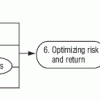Business Transformation Requires Transformational Leaders
Leadership and teaming skills are front and center in times of rapid change. Meet today’s constant disruption head on with expert guidance in leadership, business strategy, transformation, and innovation. Whether the disruption du jour is a digitally-driven upending of traditional business models, the pandemic-driven end to business as usual, or the change-driven challenge of staffing that meets your transformation plans—you’ll be prepared with cutting edge techniques and expert knowledge that enable strategic leadership.
Recently Published
Spinning Outsourcing -- Again
There have been a lot of "studies" on job migration and outsourcing over the past five years that try to position outsourcing as something political: outsourcing creates jobs; outsourcing is the inevitable consequence of globalization; outsourcing will destroy the US labor force. But what's really going on? How do we avoid the spin that proponents and critics of outsourcing present every time the topic comes up?
Why are seminars on measuring IT performance so well attended but implementation of performance management programs so rare? Could it be that we are afraid to manage IT like a business? Tune in next month as we look IT performance management full in the face — and live to tell the tale. Our expert authors will show you how to design a dashboard with leading indicators that help you take action.
Why are seminars on measuring IT performance so well attended but implementation of performance management programs so rare? Could it be that we are afraid to manage IT like a business? Tune in next month as we look IT performance management full in the face — and live to tell the tale. Our expert authors will show you how to design a dashboard with leading indicators that help you take action.
Managing a Multiple Team Project
As the IT applications development business grows, the frequency of projects requiring multiple teams for their execution will also grow. In fact, with the added need for globalization affecting nearly every application, most, if not all, IT development projects will involve more than one team.
Managing a Multiple Team Project
The challenge facing today's project manager is how to organize a number of independent teams with potentially disparate cultures into a cohesive unit. Each team has its own set of tools, templates, and processes, which it claims are the best. Should the project manager let each team do its own thing, or is some integration of tools, templates, and processes needed? The temptation will be to let each team act on its own with some integrating task at the end to "glue" everything together.
Risk Management 2006: A Comprehensive Survey (Part I)
In 2002, Cutter Consortium conducted its first comprehensive survey of the state of risk management practice in the IT community [2].
Risk Management 2006: A Comprehensive Survey (Part I)
In 2002, Cutter Consortium conducted its first comprehensive survey of the state of risk management practice in the IT community [1]. The survey found that some 86% of organizations responding claimed they were practicing risk management, and 51% of those were practicing it in a disciplined, formal manner. From reports in general software literature, surveys on risk management and its relationship to capturing lessons learned, anecdotal experience, and so on, the practice of risk management seems to have grown both generally and in formality over the past four years.
Risk Analysis for Agile Outsourcing
Writing software is hard. Depending on your perspective, this can be a good thing or a bad thing. I once had a colleague tell me that he was glad that writing software is hard because if it wasn't hard, then anybody could do it, and if anybody could do it, he would not get paid as well. If you are on the management side of the equation, however, then the fact that writing software is hard is not such a good thing, because that means that getting software written can be expensive.







